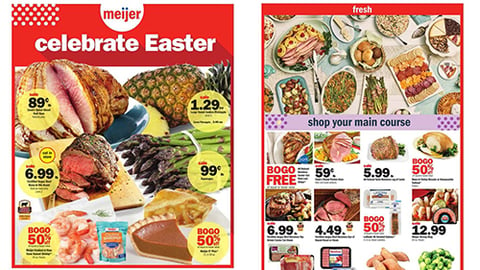How COVID-19 Will Lead to a New Promo Strategy Approach
It’s clear that the pandemic has changed shopper behavior, and we expect that some of those changes will stick. The key question for retailers and brands is how they should adjust and capitalize on it. As this crisis is unprecedented, it’s hard to predict which behaviors will stick. However, a couple of solid trends have emerged over the past few months and are likely to stay for a while.
Amoobi, an in-store customer behavior specialist, has collected and analyzed millions of in-store shopper tracks across some of largest grocers in the United States, and has found that the shift in behavior is affecting two fundamentals of retail:
- How shoppers shop: They come less often and want to find everything in one efficient trip, while keeping their distance from fellow shoppers. Today, the number of stops per minute that a customer makes in-store, a strong indicator of shopper efficiency, is still up 17% versus pre-COVID. This has been the case since March, meaning that we’re already past the standard 66 days it takes to form a new habit. On top of that, we also know that social distancing will be the norm, at least until a vaccine is widely available. For these reasons, we believe that fast and efficient shopping will stick.
- What shoppers shop: A looming recession is creating a need for low prices. Amoobi found that in-store shopper engagement with typical low-price zones such as end caps and displays has risen during the pandemic, by 13 percentage points. With many expecting their household income to keep decreasing in the coming months, we can expect that they’ll be drawn to grocers that are offering the best deals.
One retail mechanism that is, and will continue to be, highly affected by these two trends are promotions, and, more specifically, the secondary placements such as end caps, pallets or displays.
Why Promo End Caps and Displays Will Be Affected
We see a couple of key reasons that the pandemic will affect promotions and their secondary locations in store:
First, as we are sliding into a pandemic-driven recession, a large part of the population should become a lot more cost-conscious. While retailers and brands may have been able to successfully pull off cutting their promotions over the past months because elasticity was low, it will not make them win in the long run. Customers will be drawn to stores that offer competitive pricing; therefore, a strong positioning on low-price perception will be required and will involve a strategic use of end caps.
Second, efficient shoppers are typically fast shoppers who don’t take time to browse and compare offers. What retailers put on an end cap will have to be straightforward, compelling and carefully selected. Does it make sense to feature a whole lot of one single item, making it very clear to shoppers and reducing the complexity of replenishment? Or is it more profitable to display a mix of related merchandising? Leveraging the numbers to prove which end caps fit in that efficient shopper trip will provide a competitive advantage.
Finally, the heavier demand from shoppers and social-distancing guidelines is creating additional pressure for in-store execution. Secondary placements are complex to manage and bring potential stock issues, which are detrimental to a convenient shopper experience. Now might be a good time to review the use of end caps and displays, and which promotions to offer. One possibility that can be considered is turning end caps into an extension of regular shelf space, to ease in-store execution.
Leverage the Numbers to Reset Promo Strategy
Shoppers are and will be more drawn to promotions, so what better signpost is there to create a low-price perception than end caps? They have a prime location in the perimeter of the store and benefit from high visibility. Therefore, retailers and brands should carefully evaluate which end caps and displays really create value, both from a location and a merchandising perspective. Amoobi’s research shows that a properly selected and executed end cap strategy can have a very high stopping rate (>50% of passing traffic), but bad execution or choice of promotion can result in close to no engagement with the end cap. We also know that footfall in front of various end caps across the store can vary by a factor of eight between the highest and lowest footfall.
How should retailers and brands go about this process? By methodically measuring the performance of each promotion in terms of sales, but also its ability to stop customers and draw traffic into the category. An example is provided in the above chart, with one end cap analyzed across multiple weeks. It clearly shows a much better performance in week 24, with shopper engagement increasing by 41% compared with the average of the last five weeks. Retailers and brands that leverage this knowledge and proactively adjust their end cap and display strategy can have an immense impact on the sales performance of their stores.








